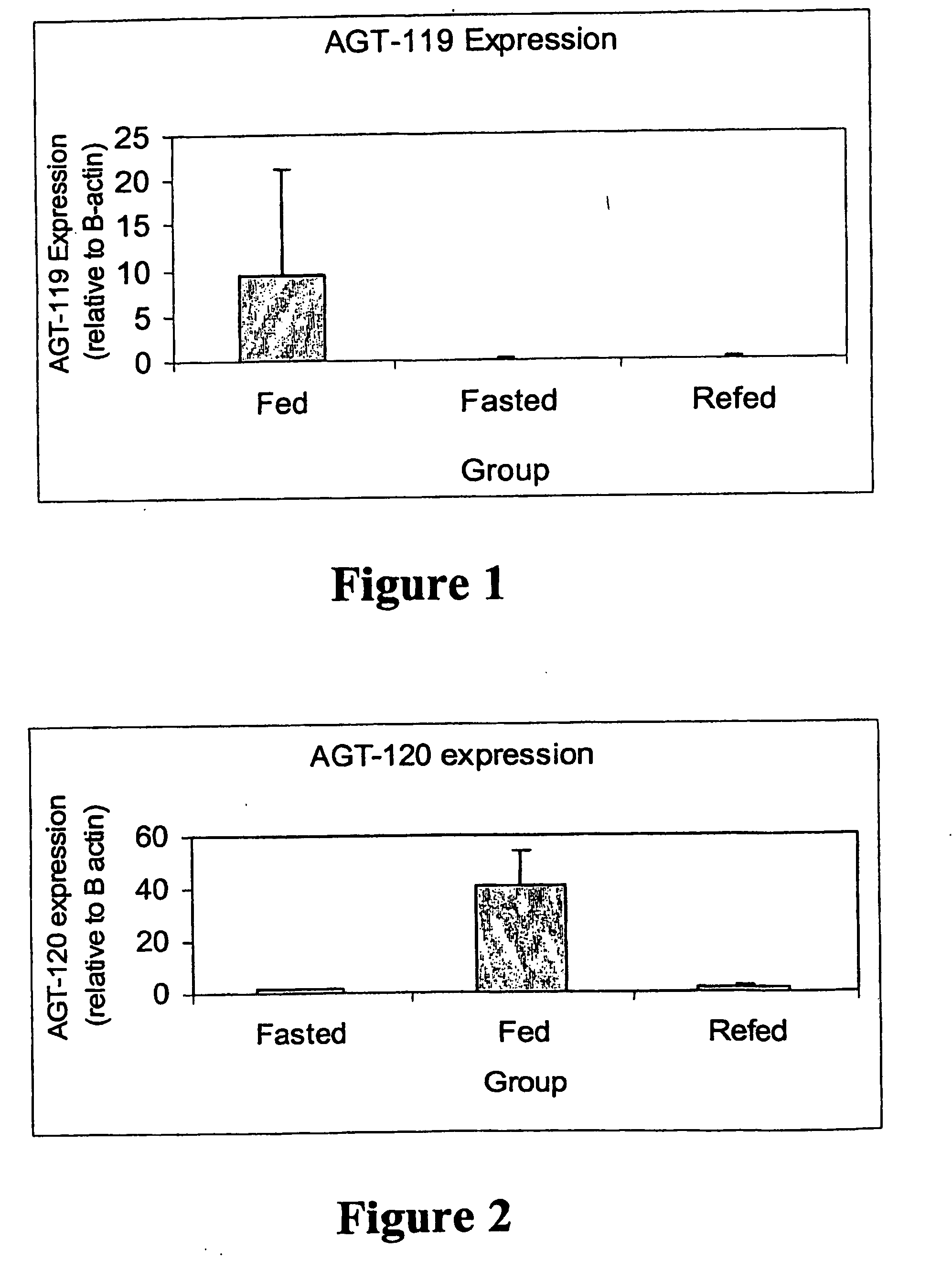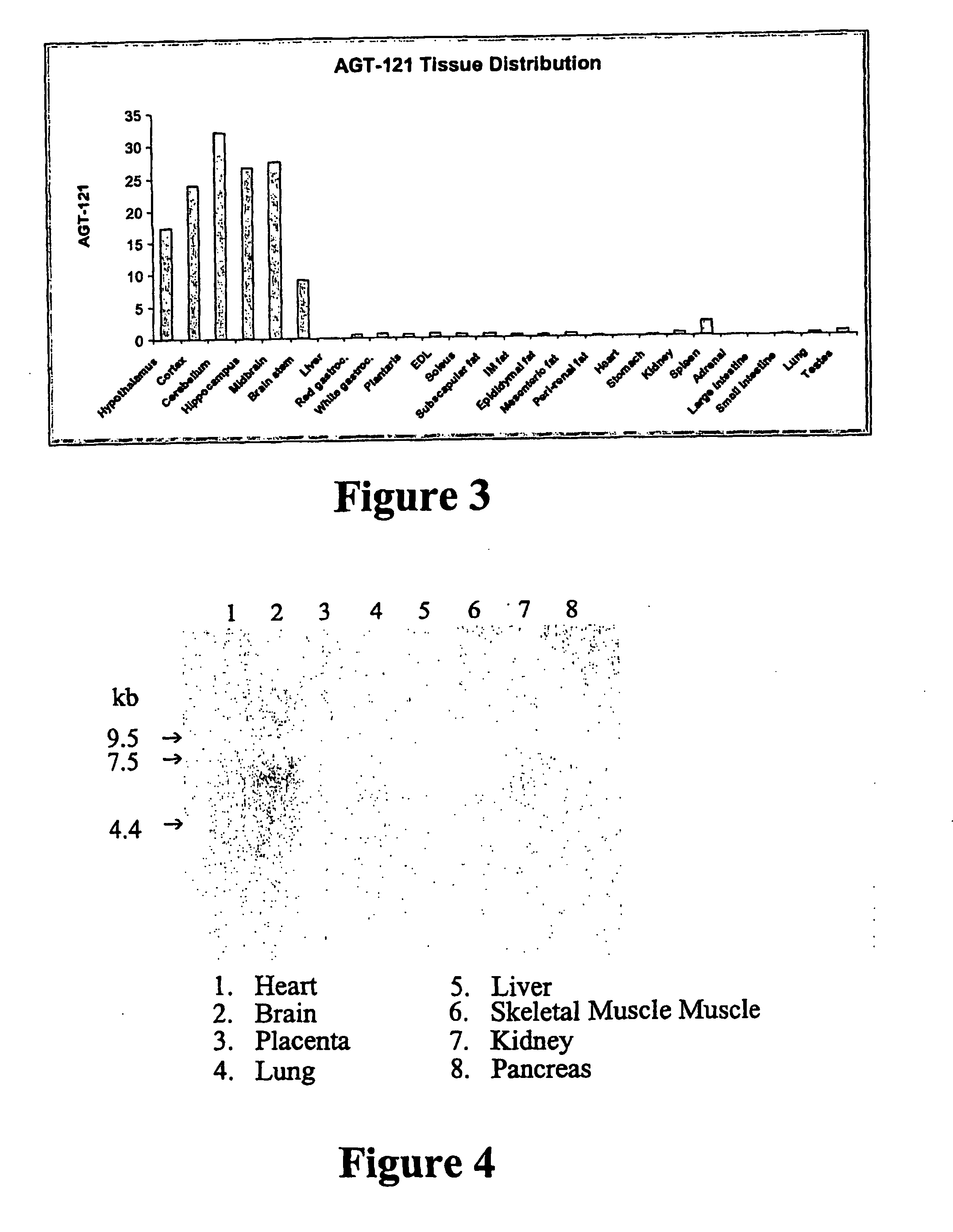Differentially expressed genes associated with obesity and type 2 diabetes
a type 2 diabetes and differential expression technology, applied in the field of nucleic acid molecules, can solve the problems of surprisingly few significant findings and the lack of definitive evidence of the chromosome in genome-wide scans in various population groups
- Summary
- Abstract
- Description
- Claims
- Application Information
AI Technical Summary
Benefits of technology
Problems solved by technology
Method used
Image
Examples
example 1
Psammomys obesus
[0181] In the following examples, Psammomys obesus rats were used for differential expression studies under different conditions. The rats were divided into three groups, based on metabolic phenotype, as follows: [0182] Group A animals: lean [0183] Group B animals: obese, non-diabetic [0184] Group C animals: obese, diabetic.
example 2
Partial Sequence of Psammomys obesus AGT-119
[0185] AGT-119 was identified using differential display PCR of stomach cDNA from fed, fasted and re-fed Psammomys obesus.
[0186] The partial nucleotide sequence is as follows:
[SEQ ID NO:1]AATGAAAGAATTGATTGATACGCAACCAAATTAGCCAGTGAGGTTAGNNNCNGGATTATCGTGACCAGATAGGAGCCTTGGAAAATGACTAAGAAAAATGAAAAACAGCCTAAAATGTCATTAGCCCAACAAGATGCGTTAAAACGCCTGGATCAAGTTAGAANGCAGAAAAGCGAAAGCC.
example 3
AGT-119 Gene Expression
[0187] Real-time PCR analysis of AGT-119 found dramatically lower levels of expression in fasted and re-fed animals when compared to fed animals (FIG. 1). In most fasted and re-fed animals the levels of AGT-119 were undetectable. Fasting was for 16 hours, fed animals had ad libitum access to lab chow and re-fed animals were fasted for 16 hours then allowed ad libitum access to lab chow for 1 hour. These results were confirmed with two sets of primers targeting the gene of interest.
PUM
| Property | Measurement | Unit |
|---|---|---|
| Fraction | aaaaa | aaaaa |
| Therapeutic | aaaaa | aaaaa |
| Energy | aaaaa | aaaaa |
Abstract
Description
Claims
Application Information
 Login to View More
Login to View More - R&D
- Intellectual Property
- Life Sciences
- Materials
- Tech Scout
- Unparalleled Data Quality
- Higher Quality Content
- 60% Fewer Hallucinations
Browse by: Latest US Patents, China's latest patents, Technical Efficacy Thesaurus, Application Domain, Technology Topic, Popular Technical Reports.
© 2025 PatSnap. All rights reserved.Legal|Privacy policy|Modern Slavery Act Transparency Statement|Sitemap|About US| Contact US: help@patsnap.com



